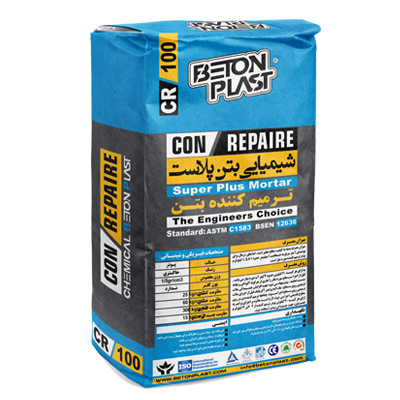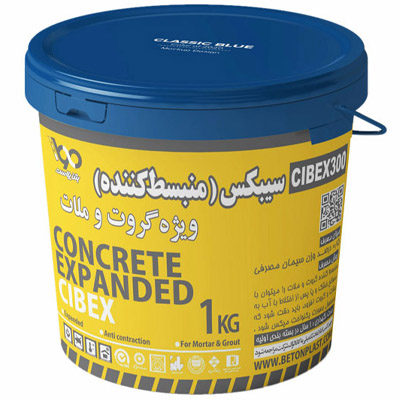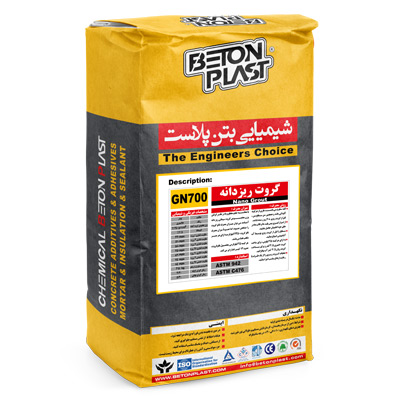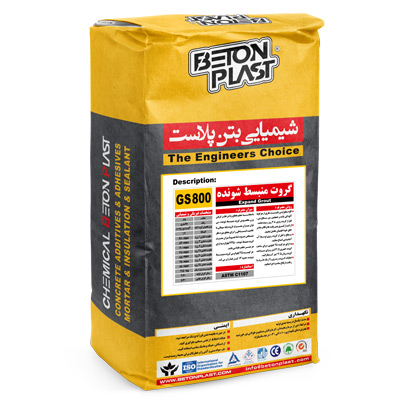Concrete Repair Mortar
- Thermal expansion coefficient equal to cement and concrete surfaces
- Has good elasticity and elasticity
- Ability to achieve premature mechanical resistance
Description
Concrete Restoration
The ready-to-use Concrete Repair Mortar, with its special formulation and unique structure, is an ideal solution for repairing and restoring concrete surfaces. This mortar, made from cement, fine aggregates, polypropylene fibers, and copolymer resins, is easily mixed with water and ready for use. Due to its special formulation, this mortar provides high adhesion to concrete and cement surfaces and offers high resistance and durability. The concrete repair mortar is non-shrinking and does not develop cracks due to shrinkage or contraction. Another feature of this product is that it is ready to use without the need for additional cement or aggregates.
One of the common issues in concrete and cementitious surface construction is surface damage and spalling, which can stem from various factors. These damages may occur due to the separation of part of the concrete during form removal, surface deterioration caused by rebar corrosion, poor-quality concrete or the pouring process, impact damage to the surface, or improper curing of the concrete. For these reasons, there is a need for a repair mortar with properties such as good adhesion and suitable grading.
More products ; grout

Features Concrete Repair Mortar
- This mortar is ready-to-use and does not require the addition of cement or aggregates.
- Its thermal expansion coefficient is similar to that of concrete and cement surfaces.
- It has excellent flexibility and flowability.
- It effectively creates a uniform and high-quality surface with a smooth and consistent texture.
- It helps reduce the costs of waterproofing concrete surfaces.
- It has high mechanical strength.
- After curing, it prevents shrinkage and cracking of the mortar.
- It has high resistance to freeze-thaw cycles.
- It prevents corrosion of steel reinforcement.
- It has excellent adhesion to underlying surfaces.
- It increases the reliability of the structure’s waterproofing.
- It offers good flexibility and elasticity.
- It can bridge over surface cracks.
- It has high resistance to environmental destructive factors.
- It enables early achievement of mechanical strengths.
- It is available in various color options.
- It easily mixes with water and is ready to apply.
- It is compatible with hardened concrete.
- It can be applied by spraying or troweling.
- It has good resistance to environmental conditions such as temperature fluctuations, humidity, freezing, and UV exposure.
- It maintains stability over time.
- It increases the speed and efficiency of repair operations.
- It has long-lasting durability.
Applications Concrete Repair Mortar
- Ideal for repairing substrate surface damages before applying surface waterproofing materials.
- Suitable for the restoration and renovation of both interior and exterior surfaces of buildings.
- Perfect for repairing and resurfacing concrete floors.
- Suitable for fixing surface damages before installing decorative materials or painting.
- Can be used to prepare surfaces before waterproofing and flooring operations.
- Ideal for filling cracks and non-structural joints.
- Perfect for leveling and repairing porous (honeycombed) surfaces.
- Suitable for restoring and correcting unevenness caused by errors in formwork and form removal.
- Can be used to fill voids left by bolt or anchor holes in concrete.
- Ideal for core filling in water structures.
- Suitable for preparing surfaces that require protective coatings.
- Can be applied as a full covering layer on concrete surfaces to create a smooth, exposed finish.
- Suitable for repairing damage and chipping in precast structures.
- Ideal for filling gaps and joints between two concrete pieces.
- Suitable for repairing various concrete surfaces, including water and sewage tanks, columns and beams, marine installations, water conveyance channels, and other concrete structures.
How to Use
- First, ensure that the surface you intend to repair is free of any loose particles, grease, or contaminants.
- The substrate must be scratched and roughened before applying the repair mortar.
- If the reinforcement bars (rebars) are exposed, make sure there is at least a 1 cm gap behind the rebar to allow for rust removal and ensure the mortar can surround the bars effectively.
- If the rebars are corroded, use a brush or sandblasting to clean them.
- For additional protection, apply a primer to the surface of the rebars, and if harsh environmental conditions are present, coat the rebar with a zinc-rich epoxy primer.
- Saturate the target surface with clean water to ensure proper adhesion of the mortar.
- For each 20 kg bag of repair mortar powder, 3.5 to 4.5 liters of water are required.
- Always add powder to water, not the other way around.
- Use an appropriate container to mix the powder and water, adding the powder gradually while the electric mixer (drill + paddle) is running. Continue mixing until a uniform, homogeneous mortar is achieved.
- To improve adhesion, it is recommended to apply an acrylic primer to the surface before applying the mortar.
- Apply the repair mortar to the target surface using a trowel, spatula, or spray.
Important Note: Always mix a quantity of mortar that can be used within 30 minutes.
- The mortar should be compacted and tightly packed around the rebar.
- Avoid using mortar that has already started to set.
- The maximum allowable thickness for applying repair mortar is 50 mm for horizontal and vertical surfaces, with a minimum thickness of 10 mm.
- For vertical surfaces, the maximum thickness is 40 mm.
- To enhance bonding and properties, it is recommended to add 2 kg of concrete bonding agent per 20 kg bag of repair mortar powder.
- If applying the repair in multiple layers, allow approximately 3 hours of curing time between layers. It is also recommended to slightly roughen the surface of the underlying layer with a spatula before applying the next layer.
In the early stages of the repair, protect the mortar from direct sunlight, freezing, wind, and other harsh environmental factors. It should also be cured for 48 hours, and if necessary, protected with wet burlap or plastic to shield it from unfavorable conditions.
Technical specification table
| physical state | powder |
| Color | Gray |
| Special Weight | 1/5±%5 gr/cm3 |
| Standard | ASTM C1583 – BS EN 12636 |
| Chlorine ion | does not have |
| Ability to liquidate | in the water |
Package
20kg bag






Reviews
There are no reviews yet.